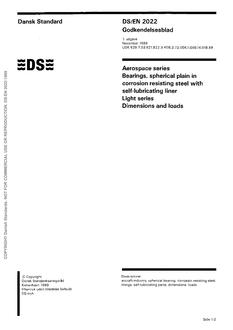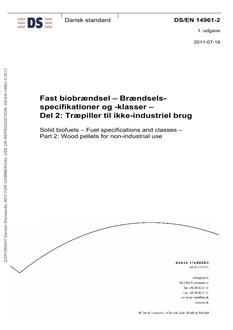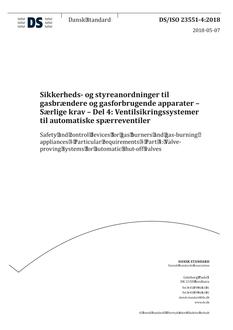-
-
Available Formats
- Availability
- Priced From ( in USD )
-
Available Formats
-
- Immediate download
- $69.00
- Add to Cart
-
- Printed Edition
- Ships in 1-2 business days
- $69.00
- Add to Cart
Customers Who Bought This Also Bought
-

DANSK DS/EN 2022
Priced From $35.00 -

DANSK DS/EN 14961-2
Priced From $61.00 -

DANSK DSF/FPREN 4855-02
Priced From $29.00 -

DANSK DS/ISO 23551-4
Priced From $78.00
About This Item
Full Description
The present document specifies technical characteristics and test methods to be used in the conformance assessment of wideband data transmission Short Range Device (SRD) network access point equipment in the frequency range 25 MHz to 1 GHz. The wideband data transmission device category covers radio devices that use wideband modulation techniques to access the spectrum. The present document specifies technical characteristics and methods of measurements for equipment operated in the following designated frequency bands given in Table 1-1. Table 1-1: Designated frequency bands SRD frequency bands 863 MHz to 868 MHz According to band no 84 of Commission Implementing Decision (EU) 2022/180 [i.7] and Annex 3 band a1 of CEPT/ERC/REC 70 03 [i.2]. 915,8 MHz to 919,4 MHz According to band 2 of Annex 3 of CEPT/ERC/REC 70 03 [i.2]. 917,4 MHz to 919,4 MHz According to band no 2 of Commission Implementing Decision (EU) 2022/172 [i.8]. In the designated bands the following types of equipment are defined: Type 1: Wideband Data Transmission Network Access Point (NAP) in data networks in 863,0 MHz to 868,0 MHz. Type 2: Wideband Data Transmission Master Network Access Point (NAP) in data networks in 915,8 MHz to 919,4 MHz and in 917,4 MHz to 919,4 MHz. Type 3: Wideband Data Transmission Network Access Point (NAP) in data networks in 915,8 MHz to 919,4 MHz and in 917,4 MHz to 919,4 MHz. These radio equipment types are capable of operating in all or part of the relevant frequency bands given in Table 1-1. NOTE 1: The availability of the frequency bands for type 2 and type 3 equipment in the European Union and CEPT countries can be obtained from EFIS (https://efis.cept.org/) and is also listed in Appendices 1 and 3 of CEPT/REC 70-03 [i.2]. In addition, it should be noted that, in some countries, part or all of the bands for type 2 and type 3 equipment may be unavailable, and/or other frequency bands may be available, for networked and/or network based short range devices. See National Radio Interfaces (NRI) as relevant for additional guidance NOTE 2: The relationship between the present document and essential requirements of article 3.2 of Directive 2014/53/EU [i.1] is given Annex A.





